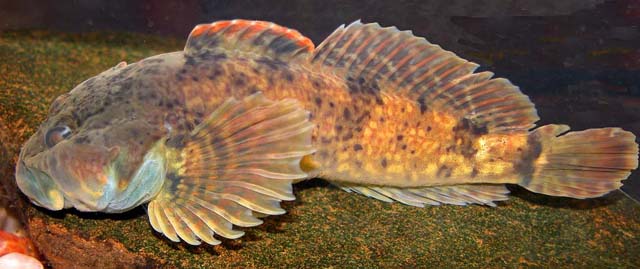| Cottidae (Sculpins) |
| 8.5 cm SL (male/unsexed) |
|
demersal; freshwater |
| North America: USA (Osage, Black, and Gasconade drainages). |
|
Dorsal spines (total): 6-8; Dorsal soft rays (total): 16-19; Anal soft rays: 12-15. This species is distinguished by the following characters: D VI-VII (96% of specimens); pectoral fin rays usually 13-15; caudal-base band may be notched or non-notched; lateral line pores modally 23; pigmentation of the ventral surface of the peritoneum moderate to strong; dorsal-fin union slight to moderate; blue chin and belly on spawning males (shared with C. immaculatus and C. caeruleomentum) (Ref. 83416). |
| This species prefers cool clear brooks and moderate to large streams and rivers usually with rapid flow and gravelly or rocky bottoms. Within these environment, it typically occurs in shallow, gravel-bottomed riffles or shoal regions with strong current. It is reported to often occur in thick growths of watercress (Nasturtium officina. Little is known of its biology. Feeds also on crayfish (Orconectes); larvae of Trichoptera (Hydropsychidae), Plecoptera, Ephemeroptera, Diptera (Chironomus, Simulium), gastropods, elmid beetles and miscellaneous animal material, including other individuals of C. hypselurus (Ref. 121014). |
|
Least Concern (LC); Date assessed: 11 November 2011 Ref. (130435)
|
| harmless |
Source and more info: www.fishbase.org. For personal, classroom, and other internal use only. Not for publication.
